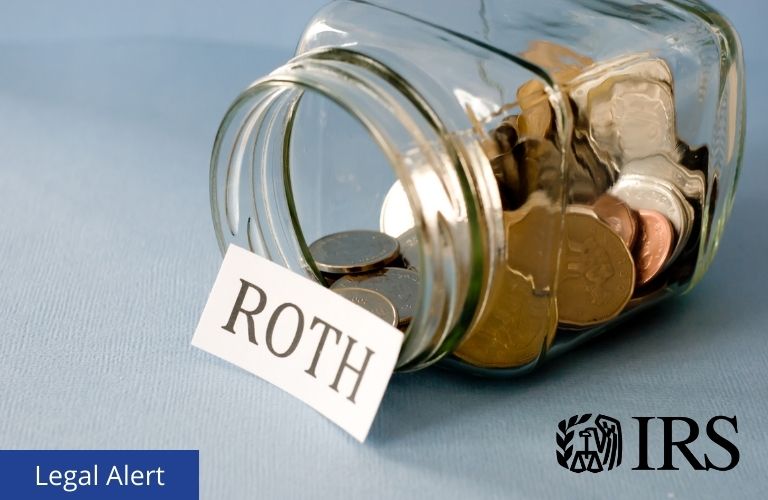
Today, on September 15, 2025, the IRS released Final Regulations that it intends to publish on September 16, 2025, regarding mandatory Roth catch-up contributions for participants with higher FICA wages. Earlier this year, the IRS released proposed regulations on this topic (see our Client Alert here).
As a reminder, “catch-up contributions” are additional 401(k) and 403(b) plan contributions that may be made by participants who are age 50 or older. As required by the SECURE Act 2.0, catch-up contributions made by higher FICA wage participants must be made in the form of Roth contributions (the “Mandatory Roth Catch-up Requirement”) beginning January 1, 2026. Individuals are “higher FICA wage participants” (the “Affected Participants”) if their prior-year FICA wages from the employer sponsoring the retirement plan exceeds $145,000 (indexed for cost-of-living increases after 2024).
The Final Regulations retain the “Deemed Roth Catch-up Election” rule set forth in the Proposed Regulations. Specifically, to facilitate compliance, a plan may provide that Affected Participants are deemed to have irrevocably designated any catch-up contributions as Roth; as long as they are given the opportunity to elect out of making catch-up contributions. In order for a plan to use the Deemed Roth Catch-Up Election option, it must be amended to so provide.
In response to questions about what happens if an individual, who has a Deemed Roth Catch-up Election in place, ceases to be an Affected Participant, the Final Regulations note that such a “Deemed Election” must cease to apply within a “reasonable period of time” thereafter. Catch-up contributions that were “deemed” as Roth contributions before the end of the “reasonable period of time” do not need to be recharacterized as pre-tax catch-up contributions.
For 401(k) and 403(b) plans that require a participant to make a separate election for catch-up contributions, the Final Regulations permit the plan to apply a Deemed Roth Catch-up Election to an Affected Participant’s separate catch-up election, thereby treating his/her catch-up contributions as Roth. In the case of an Affected Participant who has such a separate-election Deemed Roth Catch-up Election in place and who does not opt out of making catch-up contributions, the plan is not required to recharacterize as pre-tax any of the Affected Participant’s elective deferrals treated as Roth pursuant to the Deemed Roth Catch-up Election, even if those amounts are later determined not to be catch-up contributions.
While the Final Regulations generally apply to contributions in taxable years beginning after December 31, 2026, they permit plan sponsors to implement the Roth catch-up requirement for 2026 using a reasonable, good faith interpretation of the statutory provisions—the Final Regulations do not extend or modify the administrative transition period, which ends December 31, 2025.
Next Steps. As mentioned in our earlier Client Alert, Plan Sponsors should ensure that that they and their payroll providers will be able to readily identify Affected Participants for 2026. Plan Sponsors intending to use the Deemed Election provisions should consult with their recordkeepers about how they intend to handle Deemed Roth Catch-ups and adopt reasonable administrative procedures for compliance with the new Mandatory Roth Catch-up Requirements.
If you have questions on this topic, contact your SGR Employee Benefits and Executive Compensation counsel.

